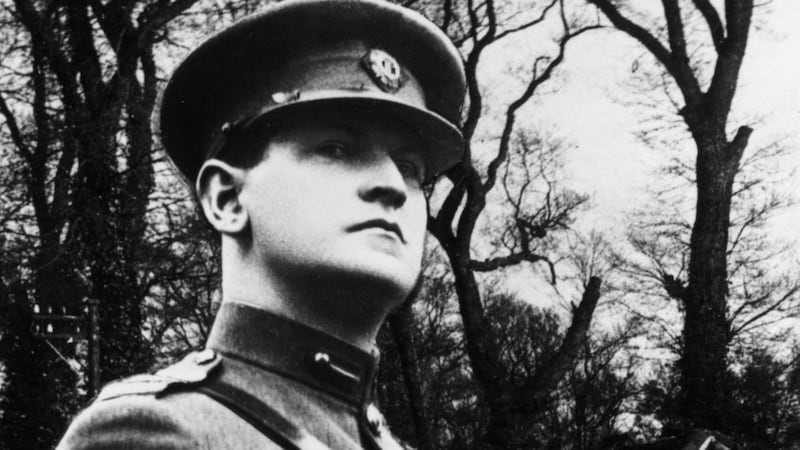He was seen by Churchill as a shrewd strategist, but Michael Collins may have been even wilier than his British adversary thought – at least if research by a University College Cork (UCC) historian is proven correct and the “Big Fellow” was behind a plan to base French military aeroplanes in the fledgling Irish Free State.
Dr Jerome Aan de Wiel, of UCC’s school of history, has found material in the French diplomatic archives that shows that Collins’s close associate, General JJ “Ginger” O’Connell, proposed the move to French military chiefs in 1922.
He explained that O’Connell first visited the head of French military intelligence, Col Fournier, on January 26th that year. He proposed that the fledgling Irish government send officers for training in France while French officers would come to Ireland to train Irish troops in artillery.
Fournier told O’Connell that such a request should be made through diplomatic channels and only after agreement with the British government, which had not yet relinquished control in Ireland. However, O’Connell said the new Irish government was anxious not to antagonise the British.
READ MORE
A few days later, in early February, O’Connell met Fournier again. This time he presented him with a memorandum, proposing a Franco-Irish entente, at a time when Anglo-Franco relations were strained over difficulties with French interests in north Africa and the Mediterranean.
The memorandum stated that “the recent development of the air force and submarines allows [the French] to consider Ireland as the left flank of the French forces in a war against England” and went on to propose the French could base military aircraft in Cork.
Dr Aan de Wiel said the French declined the offer but that O’Connell’s memorandum had been in flagrant breach of the Anglo-Irish Treaty that Collins and the Irish delegation had signed just two months earlier, and which stipulated that Ireland’s maritime defence was to be undertaken by the Royal Navy.

“It remains a mystery who in Ireland had been behind O’Connell’s visit to the French military intelligence HQ because it would seem highly unlikely that he would have taken such an initiative on his own – I can’t see him doing this without consulting those higher up and that is Collins,” he said.
“O’Connell was very close to Collins, and they were both very interested in military intelligence matters and this all revolves around intelligence, which was typical of Collins, who was the IRA’s director of intelligence during the War of Independence.”
He said that, according to Michael C O’Malley’s book Military Aviation in Ireland 1921-1945, Collins was keenly interested in military aviation and its potential.
“I think it is inconceivable that O’Connell would have personally taken the initiative to offer a plan of an Irish alliance against Britain to French military intelligence – I’m pretty sure that Collins had a hand in it and probably the guiding hand but unfortunately, I can’t prove it.”
O’Connell was to come to greater prominence just four months later in June 1922, when he was kidnapped by anti-treaty IRA men and held in the Four Courts, only for the National Army to begin shelling the building, triggering the outbreak of the Civil War, which was to last 11 months.
Among the 1,426 to lose their lives in the conflict was Collins, who died at Béal na Bláth, west Cork, that August when he and a contingent of national army troops were ambushed by the IRA.
Collins’s death will be remembered this Sunday at the annual Béal na Bláth Commemoration, 103 years after his death.A large crowd is expected to hear Minister for Health Jennifer Carroll McNeill deliver the oration.











